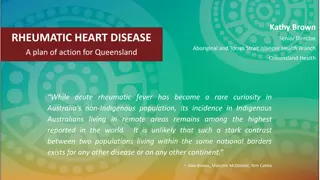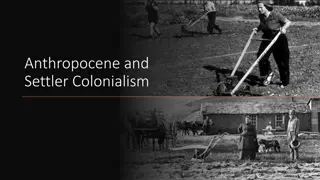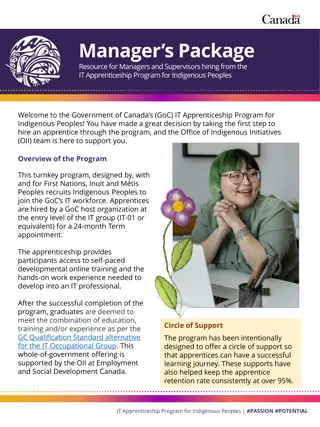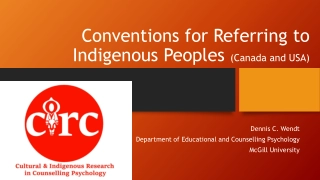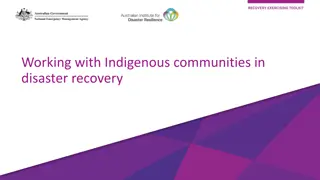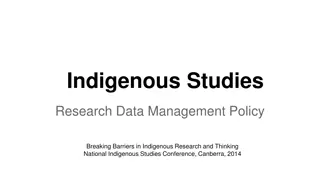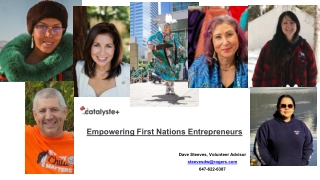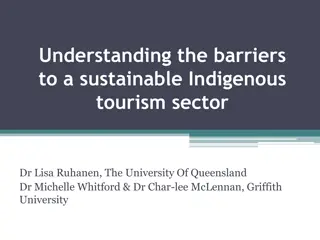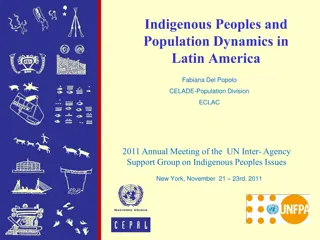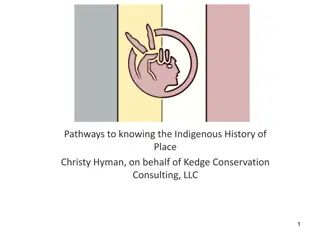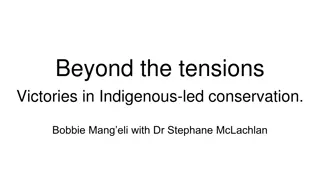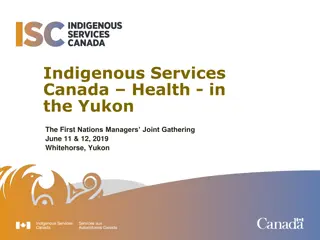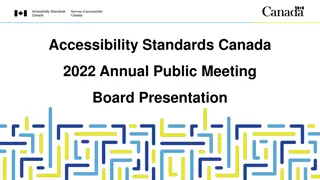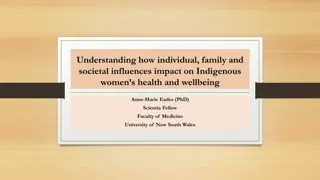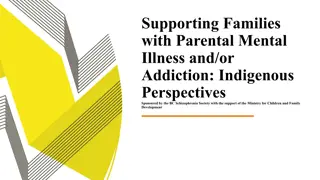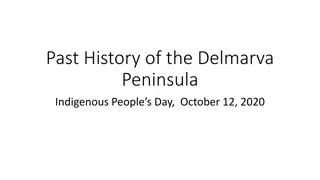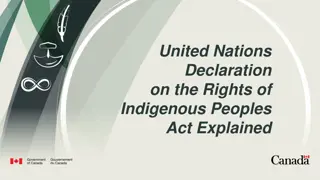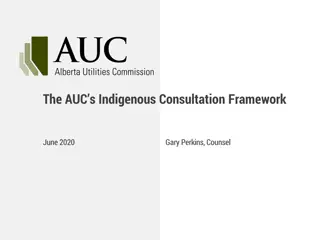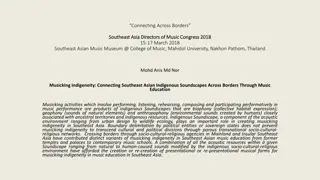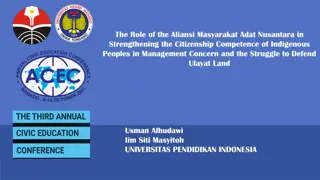Addressing Indigenous Health Inequities in Canada: Building a Renewed Health Accord
Indigenous populations in Canada face persistent health inequities compared to the general population, with little progress made in addressing these disparities. Strategies for a Renewed Health Accord should focus on concrete objectives, innovation in health policy, and support for Indigenous self-determination.
Download Presentation

Please find below an Image/Link to download the presentation.
The content on the website is provided AS IS for your information and personal use only. It may not be sold, licensed, or shared on other websites without obtaining consent from the author. Download presentation by click this link. If you encounter any issues during the download, it is possible that the publisher has removed the file from their server.
E N D
Presentation Transcript
Indigenous (Aboriginal) Health Care in Canada: Indigenous (Aboriginal) Health Care in Canada: Engaging First Nations, M tis and Inuit Populations in Engaging First Nations, M tis and Inuit Populations in Building a Renewed Health Accord Building a Renewed Health Accord Earl Nowgesic, RN, BScN, MHSc, PhD Assistant Professor Interim Director, Waakebiness-Bryce Institute for Indigenous Health Dalla Lana School of Public Health, University of Toronto Toronto, Ontario Senate Open Caucus on the New Health Accord November 16, 2016, Ottawa, Ontario 1
All My Relations All My Relations I am Anishinaabe (Ojibwe) from Kiashke Zaaging Anishinaabek (Gull Bay First Nation) and I have over 20 years of experience working in the health care sector in Canada. My parents are Ojibwe. Both attended Aboriginal residential schools and, despite the legacy of the Aboriginal Residential School System, they persevered in keeping true to their cultural traditions, ultimately passing these values down to me and my three sisters. I would like to acknowledge the Algonquin people whose traditional territory we are meeting on today. 2
Aboriginal Population Only in 2011 Population in Population in Canada Canada 900,000 60.8% 800,000 700,000 Total 33 million in 2011 4.3% Aboriginal 95.7% Non-Aboriginal 600,000 Number of People 500,000 32.3% Identity population grew from 2006 to 2011 20.1% Aboriginal 5.2% Non-Aboriginal 400,000 300,000 200,000 Aboriginal group identity population increased from 2006 to 2011 22.9% First Nations 16.3% M tis 18.1% Inuit 100,000 4.2% 2.7% 0 First Nations M tis Inuit Other Aboriginal Responses (Statistics Canada, 2013) 3
Inequities and Disparities Inequities and Disparities Aboriginal Peoples in Canada face striking and persistent inequities in health determinants, health status and health care compared to the general Canadian population. There is a growing discrepancy between Aboriginal Peoples and Settler Canadians in disease burden and health outcomes. Major inquiries such as the Royal Commission on Aboriginal Peoples (1996), the Romanow Commission on the Future of Health Care in Canada (2002), the Kelowna Accord deliberations (2005), and the Truth and Reconciliation Commission of Canada (2015) speak to strategies to eliminate inequities between Aboriginal and non-Aboriginal populations and the resultant disparities for Aboriginal Peoples. However, little progress has been made on these strategies. 4
Suggestions for Developing a Renewed Health Accord Suggestions for Developing a Renewed Health Accord To develop concrete objectives for the Renewed Health Accord pertaining to Indigenous Peoples (i.e., First Nations, M tis and Inuit). To strive for innovation and relevance in Indigenous health policy and practice, while supporting Indigenous self-determination. To identify and support scientifically excellent and community-relevant strategies for improving Indigenous health and wellbeing. To train health professionals and leaders dedicated to Indigenous issues. To encourage sustained and robust individual and institutional leadership in Indigenous health. Indigenous leadership and participation in Indigenous health policy, practice and research initiatives have been identified as fundamental cornerstones for moving forward. 5
Exemplary Practices of Indigenous Community Engagement: Exemplary Practices of Indigenous Community Engagement: Commitments from the Canadian Institutes of Health Research Commitments from the Canadian Institutes of Health Research To increase the capacity of the Canadian Institutes of Health Research (CIHR) to interact with Indigenous communities in a culturally appropriate manner. To increase CIHR investments in Indigenous health research to a minimum of 4.6% (proportional to Canada s Indigenous population) of CIHR s annual budget and seek to grow these investments. To hold annual meetings among the CIHR President and the leaders of the Assembly of First Nations, Inuit Tapiriit Kanatami, and the M tis National Council to discuss Indigenous health research priorities. 6
Engage First Nations, Mtis and Inuit Populations Engage First Nations, M tis and Inuit Populations in the Formation of a Renewed Health Accord in the Formation of a Renewed Health Accord 7


